Photoionization and Photo-Induced Processes in Mass Spectrometry: Fundamentals and Applications Ralf Zimmermann
Visit to download the full and correct content document: https://ebookmass.com/product/photoionization-and-photo-induced-processes-in-mas s-spectrometry-fundamentals-and-applications-ralf-zimmermann/
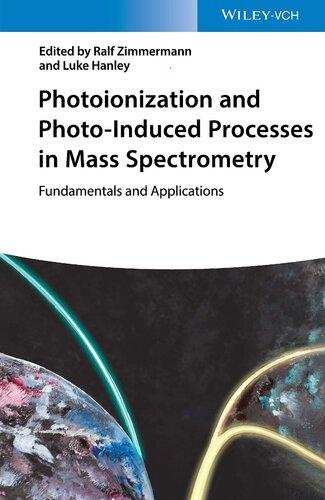
More products digital (pdf, epub, mobi) instant download maybe you interests ...
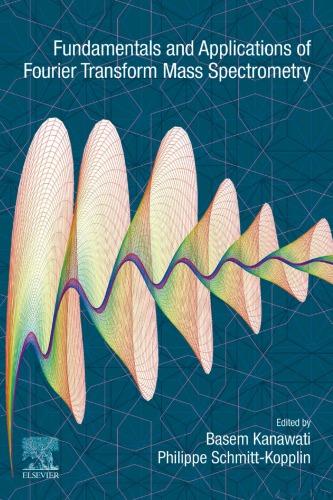
Fundamentals and Applications of Fourier Transform Mass Spectrometry 1st Edition Philippe Schmitt-Kopplin
https://ebookmass.com/product/fundamentals-and-applications-offourier-transform-mass-spectrometry-1st-edition-philippe-schmittkopplin/
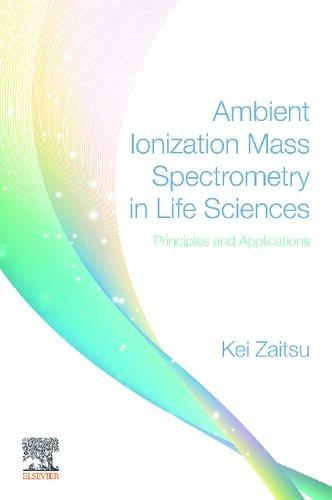
Ambient Ionization Mass Spectrometry in Life Sciences: Principles and Applications Kei Zaitsu (Editor)
https://ebookmass.com/product/ambient-ionization-massspectrometry-in-life-sciences-principles-and-applications-keizaitsu-editor/

Heat and mass transfer : fundamentals and applications 6th Edition Yunus A Çengel
https://ebookmass.com/product/heat-and-mass-transferfundamentals-and-applications-6th-edition-yunus-a-cengel/

Applications in High Resolution Mass Spectrometry: Food Safety and Pesticide Residue Analysis 1st Edition Romero-Gonz Lez
https://ebookmass.com/product/applications-in-high-resolutionmass-spectrometry-food-safety-and-pesticide-residue-analysis-1stedition-romero-gonz-lez/

Heat And Mass Transfer: Fundamentals And Applications
5th Edition – Ebook PDF Version
https://ebookmass.com/product/heat-and-mass-transferfundamentals-and-applications-5th-edition-ebook-pdf-version/
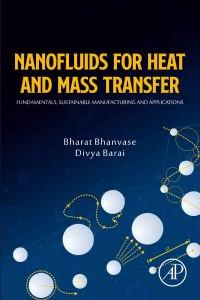
Nanofluids for Heat and Mass Transfer Fundamentals, Sustainable Manufacturing and Applications Bharat Bhanvase
https://ebookmass.com/product/nanofluids-for-heat-and-masstransfer-fundamentals-sustainable-manufacturing-and-applicationsbharat-bhanvase/
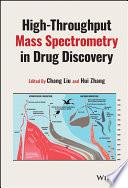
High-Throughput Mass Spectrometry in Drug Discovery 1. Edition Chang Liu
https://ebookmass.com/product/high-throughput-mass-spectrometryin-drug-discovery-1-edition-chang-liu/
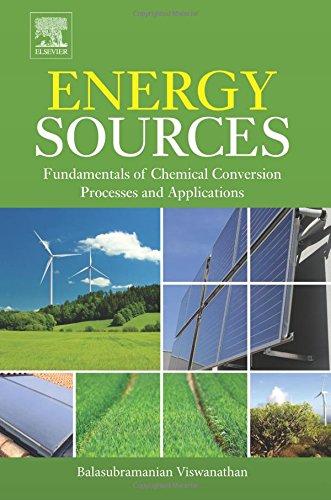

Energy Sources. Fundamentals of Chemical Conversion Processes and Applications 1st Edition Balasubramanian Viswanathan
https://ebookmass.com/product/energy-sources-fundamentals-ofchemical-conversion-processes-and-applications-1st-editionbalasubramanian-viswanathan/
Introduction to Spatial Mapping of Biomolecules by Imaging Mass Spectrometry Bindesh Shrestha
https://ebookmass.com/product/introduction-to-spatial-mapping-ofbiomolecules-by-imaging-mass-spectrometry-bindesh-shrestha/
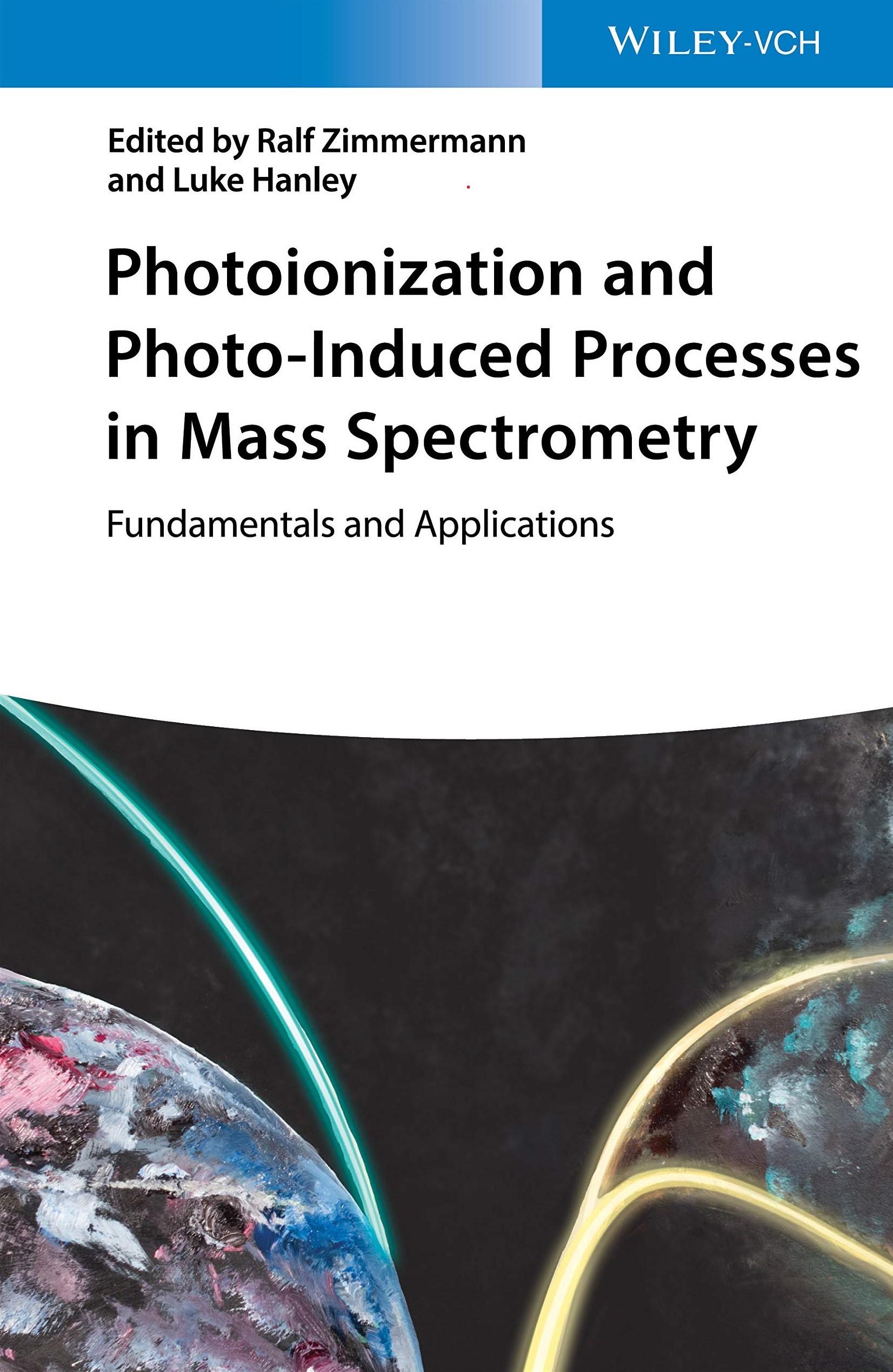
PhotoionizationandPhoto-InducedProcessesinMassSpectrometry
PhotoionizationandPhoto-Induced ProcessesinMassSpectrometry
FundamentalsandApplications
Editedby
RalfZimmermann LukeHanley
Editors
RalfZimmermann
HelmholtzZentrumMünchen InstitutfürÖkologischeChemie IngolstädterLandstr.1 85764Oberschleißheim Germany
LukeHanley UniversityofIllinois DepartmentofChemistry UnitedStates
CoverImages: CourtesyofJonathan Aldrich,TheUniversityofIllinoisat Chicago
Allbookspublishedby Wiley-VCH arecarefullyproduced.Nevertheless, authors,editors,andpublisherdonot warranttheinformationcontainedin thesebooks,includingthisbook,to befreeoferrors.Readersareadvised tokeepinmindthatstatements,data, illustrations,proceduraldetailsorother itemsmayinadvertentlybeinaccurate.
LibraryofCongressCardNo.: appliedfor
BritishLibraryCataloguing-in-Publication Data
Acataloguerecordforthisbookis availablefromtheBritishLibrary.
Bibliographicinformationpublishedby theDeutscheNationalbibliothek TheDeutscheNationalbibliotheklists thispublicationintheDeutsche Nationalbibliografie;detailed bibliographicdataareavailableonthe Internetat <http://dnb.d-nb.de>.
©2021WILEY-VCHGmbH, Boschstr.12,69469Weinheim, Germany
Allrightsreserved(includingthoseof translationintootherlanguages).No partofthisbookmaybereproducedin anyform–byphotoprinting, microfilm,oranyothermeans–nor transmittedortranslatedintoa machinelanguagewithoutwritten permissionfromthepublishers. Registerednames,trademarks,etc.used inthisbook,evenwhennotspecifically markedassuch,arenottobe consideredunprotectedbylaw.
PrintISBN: 978-3-527-33510-7
ePDFISBN: 978-3-527-68223-2
ePubISBN: 978-3-527-68222-5
oBookISBN: 978-3-527-68220-1
CoverDesign: Wiley Typesetting SPiGlobal,Chennai,India PrintingandBinding
Printedonacid-freepaper 10987654321
Contents
Preface xi
1FundamentalsandMechanismsofVacuumPhotoionization 1 JohannesPassig,RalfZimmermann,andThomasFennel
1.1Preface 1
1.2Light 2
1.3Photoabsorption 5
1.3.1TransitionsinFirstOrderPerturbationTheory 5
1.3.2PerturbationTheory 6
1.3.3Absorption 7
1.3.4DipoleApproximation 9
1.3.5SelectionRules 11
1.3.6ElectronicLineWidthandLifetime 11
1.3.7ElectronicTransitionsofMolecules 13
1.3.8Single-photonIonization(SPI) 15 References 20
2FundamentalsandMechanismsofResonance-Enhanced MultiphotonIonization(REMPI)inVacuumanditsApplication inMolecularSpectroscopy 23 UlrichBoeslandRalfZimmermann
2.1IntroductoryRemarks 23
2.2BeginningsofREMPI 25
2.3PrincipleofREMPI:RateEquationsandQuantificationofDetection Efficiency 29
2.3.1RateEquations 29
2.3.2QuantificationoftheREMPIDetectionEfficiency 31
2.3.3SpecialSituationsandProblemsinREMPIProcessesand Countermeasures 33
2.3.3.1Situation(A):Tooenergeticionizationthreshold 34
2.3.3.2Situation(B):Tooenergeticintermediatestate 35
2.3.3.3Situation(C):ToosmallFC-factors 36
2.3.3.4Situation(D):Toofastrelaxationofintermediatestate 37 2.4REMPIandDissociation 40
2.5ApplicationofREMPIforOpticalSpectroscopy 45
2.5.1EffusiveGasBeamMoleculesatRoomorElevatedTemperature: REMPISpectrawithMediumOpticalSelectivity 45
2.5.2SupersonicGasBeamsforColdMolecules:REMPISpectrawithHigh OpticalSelectivityforDiscriminationofStructuralIsomersand SpectroscopicStudiesontheTransitionState 48
2.5.2.1REMPISpectroscopyofJet-CooledBiphenylene 50
2.5.2.2REMPISpectroscopyofJet-CooledDibenzo-p-dioxinandIts Derivativesaswellasof[2,2]-Paracyclophane 61
2.5.3SupersonicGasBeamsforColdMolecules:REMPISpectrawithHigh OpticalSelectivityforDiscriminationofIsotopomers 67
2.5.4ChiralMolecules:DiscriminationofEnantiomersbyEnantioselective REMPISpectroscopy 69
2.5.5AdvancedPhotoelectronSpectroscopyBasedonREMPI:ThePES, TPES,ZEKE,MATI,Anion-PES,andAnion-ZEKEApproaches 72 References 79
3AnalyticalApplicationofSingle-PhotonIonizationMass Spectrometry(SPI-MS) 89
ThorstenStreibel,HendrykCzech,andRalfZimmermann
3.1VUVLightSources 89
3.2Lamp-BasedVUVLightSources 90
3.3Laser-BasedVUVLightSources 92
3.4MassSpectrometrywithLamporLaser-BasedVUVLight Sources 94
3.5On-lineAnalysisofComplexMixturesbySingle-PhotonIonization (SPI)MassSpectrometry 95
3.6SPI-MSinHyphenatedApplications 107
3.7AmbientMonitoring 117
3.8CommercialSolutions 118 References 119
4AnalyticalApplicationofResonance-EnhancedMultiphoton IonizationMassSpectrometry(REMPI-MS) 125
ThorstenStreibel,UlrichBoesl,andRalfZimmermann
4.1InvestigationofModelFlames 129
4.2ApplicationstoInternalCombustionEngines 130
4.3MonitoringCombustionProcessEmissionsinanIndustrial Environment 135
4.4FurtherApplicationsofREMPIMassSpectrometry 138
4.5REMPI-MSinHyphenatedAnalyticalSystems 142
4.6CommercialREMPI-MSSolutionsandApplications 150 References 152
5ProbingChemistryatVacuumUltravioletSynchrotronLight Sources 159
KevinR.WilsonandFeiQi
5.1Introduction 159
5.2CombustionChemistry 162
5.2.1PyrolysisinFlowReactor 163
5.2.2Jet-StirredReactorOxidation 166
5.2.3PremixedFlames 167
5.2.3.1Low-PressureLaminarPremixedFlame 167
5.2.3.2AtmosphericPressureLaminarPremixedFlame 171
5.2.4CoflowDiffusionFlame 173
5.2.5Biomass/CoalPyrolysis 174
5.3Isomer-ResolvedStudiesofElementaryChemicalReactions 176
5.3.1MultiplexedChemicalKineticsPhotoionizationMass Spectrometer 177
5.3.2ShockTubeKinetics 179
5.3.3PyrolysisReactors 180
5.3.3.1BimolecularKinetics 181
5.3.3.2UnimolecularKinetics 181
5.3.4Low-TemperatureElementaryReactionsinaPulsedLaval Nozzle 182
5.4Summary 186
5.4.1AtmosphericAerosolChemistry 188
5.4.1.1AerosolMassSpectrometry 189
5.4.1.2GasChromatographyandSVUVPhotoionizationMass Spectrometry 195
5.4.2FutureOutlook 202 Acknowledgments 203 References 203
6ResonanceIonizationMassSpectrometry(RIMS): FundamentalsandApplicationsIncludingSecondaryNeutral MassSpectrometry 215 MichaelSavinaandRetoTrappitsch
6.1Introduction 215
6.2ResonanceIonizationFundamentals 217
6.2.1LaserSpectroscopy 217
6.2.2SelectionRules 220
6.2.3Odd–EvenEffect 222
6.3ReductiontoPractice 224
6.3.1LaserSelection 224
6.3.2MassSpectrometerSelection 225
6.3.3LaserOverlap 229
6.4Applications 230
6.4.1UsefulYieldandAbundanceSensitivity 231
6.4.2StardustGrains 234
6.4.3MultielementAnalysis 236
6.4.4ElectronicProcessesDuringVaporization 238
6.5Resources 240 References 241
7UltrashortPulsePhotoionizationforFemtosecondLaserMass Spectrometry 245
CorneliusL.Pieterse,JasonM.Gross,andLukeHanley
7.1Introduction 245
7.2MechanismsofUltrashortPulsePhotoionization 246
7.3StudiesofAminoAcids,Dipeptides,andC60 LeadingtoAdvancedSFI Models 249
7.4VolumetricIntensityDependenceandMultiplyChargedIons 251
7.5DirectandGasChromatography-CoupledAnalysisofExplosives 253
7.6GasChromatography-CoupledAnalysisofPolyaromatic Hydrocarbons,Pesticides,andFragrances 255
7.7LaserSecondaryNeutralMassSpectrometry 256
7.8Conclusions 259 Acknowledgments 260 DisclosureStatement 260 References 261
8PhotoionizationatElevatedorAtmosphericPressure: ApplicationsofAPPIandLPPI 267 TiinaJ.KauppilaandJackSyage
8.1Introduction 267
8.2AtmosphericPressurePhotoionization 267
8.2.1AtmosphericPressurePhotoionizationIonSource 267
8.2.2GeneralPrinciplesofAtmosphericPressurePhotoionization 268
8.2.2.1IonizationMechanisminPositiveIonAPPI 268
8.2.2.2EffectoftheDopant 270
8.2.2.3IonizationMechanisminNegativeIonAPPI 271
8.2.3APPIinLiquidChromatographyMassSpectrometry 272
8.2.4APPIinGasChromatographyMassSpectrometry 274
8.2.5APPIAsanInterfaceforCapillaryElectrophoresisMass Spectrometry 277
8.2.6APPIinMultimodeIonSources 278
8.2.7AmbientMassSpectrometryUtilizingPhotoionization 278
8.3Low-PressurePhotoionization(LPPI) 279
8.4ApplicationsofAPPIandLPPI 281
8.4.1Drugs,Pharmaceuticals,andMetabolites 281
8.4.2Steroids 288
8.4.3OtherEndogenicCompounds 288
8.4.4PlantResearch 289
8.4.5EnvironmentalMonitoring 289
8.4.6OilAnalysis 291
8.4.7FoodAnalysis 291
8.5Conclusions 292 Acknowledgments 292 References 292
9FundamentalsofLaserDesorptionIonization 305 FabrizioDonnarumma,KermitK.Murray,andLukeHanley
9.1Introduction 305
9.2ExperimentalandComputationalParametersandObservables 306
9.3GeneralMechanisticConsiderations 307
9.4Laser-InducedThermalorAcousticDesorptionofNeutralsfrom MetalSurfaces 307
9.5MolecularResonantlyEnhancedDesorption:UV-MALDIand IR-LA 309
9.5.1MALDIwithUVLasers 310
9.5.2NanosecondtoPicosecondIRLaserAblation 313
9.6NanophotonicDesorption 314
9.7FemtosecondLaserAblation 315
9.8InternalEnergyTransferredbyLDIandSupersonicCooling 317
9.9Conclusions 318 Acknowledgments 319 DisclosureStatement 319 References 319
10ApplicationsofLaserDesorptionIonizationandLaser Desorption/AblationwithPostionization 327 YeniP.Yung,FabrizioDonnarumma,KermitK.Murray,andLukeHanley
10.1NatureofSamplesandInformationtobeGainedfromLaser DesorptionandLaserAblationMassSpectrometry 327
10.2LaserAblationandLaserDesorptionIonizationMSforElemental Analysis 328
10.3NonimagingMALDI-MSforMolecularAnalysis 329
10.3.1QualitativeandQuantitativePerformanceforDifferentTypesof Analytes 329
10.3.2Peptides,Proteins,Lipids,andSugars 330
10.3.3DNAandRNA 330
10.3.4Polymers 331
10.4MALDI-MSImagingforMolecularAnalyses 332
10.5ExampleofStandardMALDI-MSvs.ImagingMode: Pseudomonas aeruginosa333
10.6MALDIAlternatives:MatrixFree,Ambient,NanostructureInduced, andHighEnergy 335
10.7MolecularLD/LA-MSBeyondNanosecondUVLasers 336
10.8Laser,Electrospray,andOtherPostionizationofPlumesFormedby LD/LA 337
x Contents
10.8.1LDPI-MS:LaserDesorptionPostionizationofNeutralsin Vacuum 337
10.8.2PostionizationCoupledtoLD/LAatElevatedPressures 340
10.9LaserAblationSamplingforSolidorLiquidCollection 341
10.9.1LaserAblationSamplingwithOnlineMSAnalysis 342
10.9.2LaserAblationSamplingwithOff-lineAnalysis 343
10.10Conclusions 344
Acknowledgments 345
DisclosureStatement 345 References 345
11LaserIonizationinSingle-ParticleMassSpectrometry 359 JohannesPassigandRalfZimmermann
11.1RelevanceofAtmosphericAerosolsforClimateandHealth–The Single-particlePerspective 359
11.2AnalysisofIndividualParticlesbyLaserIonizationMS–Historical DevelopmentandBasicPrinciple 362
11.3IonizationinSingle-ParticleMassSpectrometry:Laser Desorption/Ionization(LDI) 365
11.3.1Single-ParticleLDI–ThePhysicalFramework 366
11.3.2LaserLightSourcesforLDI 371
11.3.3ChemicalQuantificationApproachesforLDI 372
11.4IonizationinSPMS:LaserPhotoionizationofPreviouslyDesorbed Species 373
11.5InstrumentalRealizations 381
11.5.1MassAnalyzers 381
11.5.2AerosolInlet 383
11.5.3ParticleSizing 384
11.6DataEvaluation 386
11.7Applications 387
11.7.1AmbientAerosolsinUrbanandDenselyPopulatedAreas 387
11.7.2AmbientAerosolsinRuralandMarineEnvironments 388
11.7.3Aircraft-BasedStudies 389
11.7.4InSituCharacterizationofCloudandIceCondensationNuclei 389
11.7.5FocusonOrganicCompounds 390
11.7.6Bioaerosols 392
11.7.7CombustionAerosols 392
11.8CommercialLaserIonizationSingle-ParticleMassSpectrometry Systems 393 References 394
Index 413
Preface
Thegoalofthisbookistoexplainthefundamentalsofphotoionization(PI)and theassociatedapplicationsofPIthatareplayinganincreasinglyimportantrole inmassspectrometry(MS).Thetargetaudienceofthisbookincludespracticingscientists,includingPhDandMScstudents,whoseprimaryinterestisinthe applicationofPItoelementalormolecularanalysisbymassspectrometry.An overlysimplisticanalysisprovidesseveralmotivationsfortheuseofPIinmass spectrometry:
1.Enhanceionyieldsforspecificimportantcompoundsofsubstanceclasses whereotherionizationstrategieshaveproveninsufficient,
2.Selectivelyionizeindividualmolecularstructuresorclassesofmoleculesfrom mixtures,
3.Formionsfromneutralswithreducedorcontrolleddegreeoffragmentation, and
4.Inducedesorptionorablationofsolidsforsampling.
Photoionizationcomesindifferentversionsandtechnologicalrealizations, makingitsomewhatmorecomplicatedandthuslesspopularthanstandard ionizationmethodsinmassspectrometrysuchaselectrosprayionizationand electronionization.Nevertheless,onegoalofthisbookistodemonstratehow theseandothermotivationsdrivetheuseofPIinMS-basedanalyses.Theeditors andauthorshopethatthereaderswillusethisworkasaseriesofbuildingblocks forfutureadvancesinthispromisingarea.
Actually,PIwascentraltotheearlydevelopmentofmassspectrometryand singlephotonionization(SPI)remainsperhapsthebestmethodforintroducing awell-definedamountofinternalenergyintoamolecularion.Earlyworkin SPIusedvacuumultraviolet(VUV)gasdischargelamps.However,theadvent oflasersandtheassociatednonlinearopticalmethodsmademultiphoton ionization(MPI)possible,dramaticallyexpandingPIasafundamentalstrategy toprobemolecularstructure.Thecontinuingimprovementoflasertechnology hasalsocreatedongoingopportunitiesforMS-basedapplicationsofPI.For example,MPIviatheexcimerlaser-pumpeddyelaserwasdeployedinmany earlyfundamentalstudies,butwascostly,difficulttouse,andrelativelyunreliable.However,thedevelopmentofsmallerandrugged,field-deployablelaser sources,suchascompactexcimerlasers,solid-statelasersasNd:YAGlaserswith integratedharmonicgeneration,andtunablesolid-statelaserssuchassealed,
Nd:YAG-pumpedopticalparametricoscillators(OPOs)orTi:sapphirecavities renderedMPIsufficientlyrobustformorewidespreadMSapplications. Thisinterplaybetweenfundamentalmethodsandinstrumentalconsiderations hasdriventhedevelopmentofanalyticalapplicationsofPI,soattentionispaid heretobothconsiderations.Photodissociationisonlydiscussedherewhenit occursinconjunctionwithPI,suchasviatheformationoffragmentionsfrom neutralprecursorsduringMPIorSPI.Thus,theburgeoninguseofphotodissociationoftheprecursorormolecularionstoformfragmentionsforstructural elucidationoftheformerisnotdiscussedhere.Thefundamentalsandmechanismsoflowpressure,gas-phasemolecularPIformassspectrometryiscovered inChapters1,2,5,and7,whilemolecularatmosphericpressurePIisatopicin Chapter8.Applicationsandexperimentalmethodsoflow-pressure,gas-phase photoionizationmassspectrometry(PIMS)arepresentedinChapters3,4,and7. ElementalanalysisbyPIiscoveredexclusivelyinChapter5.Processesandapplicationsthatincludealaserdesorption(LD)ordirectlaserdesorption/ionization (LDI)ofanalytesfromthecondensedphasearecoveredinChapters9and10, whileChapter11focusesonthedirectanalysisofindividualaerosolparticles usingLDI,LD,andPI.
Inthefollowing,thecontentofthebookisbrieflyhighlightedchapterwise.
Thefirstchapterentitled FUNDAMENTALSandMECHANISMSofVACUUM PHOTOIONIZATION ,isservingasanintroductiontomechanisticissuescommontoPIofmolecules,atoms,andclustersundervacuum.Itprovidesafundamentaldescriptionoflightandtheinteractionoflightandmatterintheformof photoabsorptiononaquantummechanicallevel.Thisincludesanexcursionin perturbationtheoryandthedipoleapproximationandleadstoanelucidationof thephotonabsorptionselectionrules.Finally,theSPIprocess,asanabsorption inacontinuum,nonboundstate,isdiscussedandthemostimportantparameters forSPI,theSPIcrosssectionsandionizationenergies,arededucted.
FundamentalaspectsofMPIofmoleculesintheabsenceofgas-phasecollisionsarecoveredinthefollowingchapter,entitled FUNDAMENTALSand MECHANISMSofRESONANCE-ENHANCEDMULTIPHOTONIONIZATION(REMPI)inVACUUMandAPPLICATIONofREMPIforMOLECULAR SPECTROSCOPY(Chapter2).Here,thetheoreticalconsiderationofphotoionizationprocessesisextendedtoMPIprocessesofmolecularspeciesand MPI-basedspectroscopy,whilemultiphotonionizationofatomsiscovered inChapter6.DifferentMPIandREMPIprocessesarepresentedandarate equationapproachisusedtodeducttheinfluenceofmolecularphysicalpropertiesonionizationefficiency.SpecialREMPIschemesarediscussed,whichcan bypassunfavorablephotophysicalproperties.Inthefollowing,MPI-induced fragmentationanddissociationprocessesarediscussed.Theapplicationof REMPIformolecularspectroscopywithandwithoutsupersonicjetcoolingis demonstratedinanexemplarymannerviaadetaileddiscussionoftheREMPI wavelengthspectrumofsupersonicjet-cooledbiphenyleneandsomeother interestingaromaticmolecules.REMPIwavelengthspectroscopy,inparticular withsupersonicjetcooling,revealstheselectivityoftheREMPIprocessthat connectshigh-resolutionultraviolet(UV)spectroscopytomassspectrometry. Theselectiveionizationofisomericandisobariccompounds,however,canbe
Preface xiii extendedtothedifferentiationofisotopomersand–byusingaspecialREMPI techniquewithcircularpolarizedlaserlight–evenofenantiomers.Finally,in thischapter,REMPI-basedphotoelectronspectroscopic(PS)techniquessuchas zerokineticenergyphotoelectronspectroscopic(ZEKE-PS)areintroduced.The explanationofthefundamentalaspectsofSPIandREMPIleadstotheanalytical applicationofthesetwoPIapproaches.
InthebeginningofChapter3,whichisentitled“ANALYTICALAPPLICATIONSofSINGLE-PHOTONIONIZATIONMASSSPECTROMETRY ,”abrief introductionintocommonVUV–lightsources,isgiven.Thesecanbedistinguishedasincoherentlightsources(“lamp”-basedtechnologies)orcoherent lightsources(lasers).Also,abriefintroductiontothegenerationofsynchrotron lightintheVUVrangeiselaborated(forapplicationsofsynchrotron-based SPI,seeChapter5).ThegeneralsetupofSPImassspectrometrysystemswith laser-andlamp-basedsourcesisintroduced.DependingontheusedVUV wavelengths,SPIcanbeaverysoftionizationmethod,enablingthedetection ofthemolecularmassfingerprintofcomplexmixtures.ThisrendersSPI-MS toanidealapproachfordirectrealtimemonitoringofcomplexgasandvapor mixtures.Differentapplicationsforonlinemonitoringofcombustionandpyrolysisprocessesareintroduced,includingonlinemonitoringofgasphasesfrom industrialprocesses,suchasthecoffee-roastingand/orthebiomasspyrolysis process.Hyphenatedinstrumentalanalyticalconcepts,e.g.gaschromatography (GC)orthermalanalysis(TA)coupledtoSPImassspectrometry,arepresented andtypicalresultsareshown.
Chapter4, “ANALYTICALAPPLICATIONofRESONANCE-ENHANCED MULTIPHOTONIONIZATIONMASSSPECTROMETRY(REMPI-MS), ” gives, inasimilarwayasChapter3forSPI,anoverviewofanalyticalapplicationsof REMPImassspectrometry.Thepreferentialdetectionofaromaticanalytesby theREMPIprocesswithcommonlaserisemphasizedinChapter3.Anoverview ontypicalfixed-frequencylaserlines(excimerlasersorfrequency-multiplied, solid-statelasers)isprovidedalongwithtypicalwavelengthrangesoftunable lasersystems.Inthefollowing,severalexemplaryanalyticalconceptsand applicationsusingtunableandfixed-frequencylasersarepresented.Thetunable lasersourcescanbeusedtofocusonspecificanalytes,whichworkparticularly wellwithsupersonicjetexpansioninletsystems.Formanyapplications,however,fixed-frequencywavelengthlaserandeffusive,heatedgasinletscanbe appliedforausefulandoftenverysensitive“overview”MS-profilingofmany aromaticcompounds.Exemplaryprocessmonitoringapplicationscomprise detectionofcombustionby-productsinfluegasesofincinerationplantsor flavorandroastdegree,indicatingcompoundsincoffee-roastingoff-gas. Hyphenatedinstrumentsconnectinggaschromatographyorathermo-optical carbonanalyzer(foraerosolloadedfilters)toREMPI-MSdevicesarediscussed. AdirectinletofliquidsamplesintoREMPImassspectrometryispossiblevia amembraneinletoradirectliquidintroductionintotheionsource.Notethat SPIandREMPIprocessescanbeperformedinthesameMSsystem.Finally, REMPIunderatmosphericconditionsisdiscussed(atmosphericpressurelaser ionization–APLI;seealsoChapter8forSPI-basedatmosphericpressure-based ionization).
TheapplicationofsynchrotronVUVlightforSPI-MS-basedinvestigationof combustionandpyrolysisprocessesislaidoutinChapter5, “PROBINGCHEMISTRYATVACUUMULTRAVIOLETSYNCHROTRONLIGHTSOURCES.” Bydirectmolecularbeamsamplingfromflamesaswellasfromoxidationor pyrolysisreactors,moleculesfromthereactionzonecanbedirectlyintroduced inthemassspectrometerwithoutwallcontact.Thisenablestheanalysisofstable moleculesandintermediatesfromthereactionzones.Theflowreactorsand modelflameapparatusisoftencompactenoughtobebroughttosynchrotron lightsourcefacilitiesandcanbeusedforkineticinvestigations.Unlikeclassical VUVsources,thesynchrotronlightfromappropriatebeamlines(i.e.equipped withVUVmonochromators)exhibitawidetunability,highenergyresolution, andarelativelyhighphotonflux.Theidentificationofindividualcompounds fromisobaricmixturecomponentsispossiblebyphotoionizationefficiency (PIE)spectroscopy,i.e.therecordingoftheionyieldasafunctionoftheVUV wavelength.Chapter5alsopresents,anoverviewondifferentsynchrotron-based PIMSapparatusandanalyticalresultsforseveralreactorsandapplications.
REMPIofatomsiscommonlyreferredtoas“resonanceionizationmass spectrometry(RIMS).TheRIMStechnologyandapplicationsaredescribed intheChapter6, RESONANCEIONIZATIONMASSSPECTROMETRY (RIMS):FUNDAMENTALSANDAPPLICATIONSINCLUDINGSECONDARY NEUTRALMASSSPECTROMETRY .Unlikeinmolecules,atomictransitions areverynarrowandthusveryhighionizationefficienciescanbeachieved.Laser spectroscopicprinciples,atomicselectionrules,andtheprinciplesetupofRIMS instrumentsarediscussed.Inmanycases,twoormoretunablelasersarerequired forhigh-resolutionRIMS.Thishigheffort,however,inmanycasesallowseven anisotope-selectiveionizationandthesuppressionofnearlyallinterferences. Applicationsarefocusingontheanalysesofultratracesofradioactiveelements intheenvironment(e.g.plutoniumfallout)orthecharacterizationofvery precioussamplessuchasstardustgrains.
MPIisoftenperformedwithnanosecondlaserpulses,butshorteningthe pulsesintothesubpicosecondregimecanfundamentallychangetheionization process,asdiscussedinChapter7,“ULTRASHORTPULSEPHOTOIONIZATIONforFEMTOSECONDLASERMASSSPECTROMETRY ”.Themechanisms ofultrashortpulseionization,inparticularnonresonantmultiphotonionization (NRMPI)andstrongfieldionization(SFI),areelucidated.Oneadvantageof ultrashortpulseionizationistoovercomeproblemsinREMPIionizationcaused bytheshortlifetimeofintermediatedstates(seealsoChapter2).Thus,for example,molecularionsofexplosives,suchastrinitrotoluene(TNT),which exhibitanunstableS1 stateduetofastpredissociation(NO-cleavagefromnitro groups),canbeobtainedbyafs-laserionizationprocess.Inadditiontogas-phase ionization,ultrashortpulseionizationisalsobeneficialforpostionizationof neutralstoenhanceionsignalinsecondaryionmassspectrometry(SIMS)or laserdesorption(LD)-basedmassspectrometry.
Massspectrometryofsamplesatambientpressurehasbecomeamajorapplication,whichisservedbyatmosphericpressurephotoionization(APPI)usingVUV forinductionoftheionizationprocess.Chapter8,“PHOTOIONIZATIONat ELEVATEDorATMOSPHERICPRESSURE:APPLICATIONofAPPIandLPPI ,”
Preface xv isdevotedtosuchionizationmechanismsatelevatedpressuresandtheir experimentalimplementation.Furthermore,somecharacteristicapplicationsof APPIareshown.ThehigherpressuresduringAPPIallowabundantgas-phase ion-moleculeandmolecule-moleculecollisionsthatfinallyleadtoenergyand/or chargetransferintheAPPIprocess.Therefore,veryhighsensitivitiescanbe observedinAPPI.However,althoughsuchsecondarychemicalionization processesoftenaredominatingtheionizationprocess,APPIiscommonlyseen asaphotoionizationtechnology,althoughtheterm“photoinducedchemical ionization”maybetterdescribetheAPPIprocessinmanycases.Inadditionto SPI,theREMPIprocesscanalsobeusedtoinitiateionizationunderatmospheric conditions(atmosphericpressurelaserionization,APLI,seeChapter4).
LaserirradiationofcondensedphasemattercanalsoleadtoPIaswellas otherenergytransfereventsthatinturnleadtodesorptionand/orablation thatiswidelyusedforsampling.Althoughthisbookisfocusingonphotoionizationprocessesinvacuumorinthegasphase,laserdesorption-based processesandapplicationsinmassspectrometryarenotbeexcluded.Chapter9, “FUNDAMENTALSofLASERDESORPTION/IONIZATION ,”introducesthe mechanismsoflaserdesorption/ionization(LDI)andmatrix-assistedlaser desorption/ionization(MALDI),whileChapter10,“APPLICATIONSOFLASER DESORPTIONIONIZATIONANDLASERDESORPTION/ABLATIONWITH POSTIONIZATION ,”introducesthecorrespondingapplications.TheMALDI approachforionizationofbiopolymers(e.g.proteinsorlipids),polymers,and otherlargermoleculesisbroadlyapplied,andnumerousreviewsandbook chaptersandwholebookshavealreadycoveredthistopic.However,forcompleteness,theknowledgeontheMALDIprocessissummarizedinChapter9, althoughmorefocusisputonlesscommonstrategiessuchasfs-laserablation. InthelaserdesorptionapplicationsdiscussedinChapter10,inadditiontothe moleculardetectionalso,MALDIimagingapplicationsareconsideredanda focusisputontheapproachesusingpostionizationoflaserdesorbedneutrals.
Finally,Chapter11,“LASERIONIZATIONinSINGLE-PARTICLEMASS SPECTROMETRY ,”elaboratesonanonlinelasermassspectrometricsingle (aerosol)-particlemeasurementtechnique,whichisbasedeitherontheLDIoron alaserdesorption–laserpostionizationapproach.Afteranintroductiontothe historicaldevelopmentofsingle-particlelaserionizationMSsystems,theLDI processisdiscussedincontextoftheparticleanalysisbackground.Thisincludes theionizationmechanism,lasersources,andquantificationaspects.Afterthe discussionofapproachesbasedonthelaserpostionizationofmoleculesdesorbedfromindividualparticles,instrumentalrealizationsandapplicationsare presentedanddiscussed.
Finally,wehopethatthereaderswillenjoyandlearnfromourexpositionof photoionizationfundamentalsaswellastheversatilityofthephotoionization massspectrometrymethodologyforcuttingedgeapplications.
LukeHanley RalfZimmermann
UniversityofIllinois,Chicago,USA UniversityofRostock,Germany
FundamentalsandMechanismsofVacuumPhotoionization
JohannesPassig 1,2 ,RalfZimmermann 1,2 ,andThomasFennel 3
1 UniversitätRostock,InstitutfürChemie,AnalyticalChemistryandJointMassSpectrometryCentre(JMSC), Dr.-Lorenz-Weg2,D-18059Rostock,Germany
2 HelmholtzZentrumMünchen,GermanResearchCenterforEnvironmentalHealthGmbH,ResearchUnit ComprehensiveMolecularAnalytics(CMA)andJointMassSpectrometryCentre,GmunderStr.37,D-81379 München,Germany
3 InstituteofPhysics,UniversityofRostock,Albert-Einstein-Straße23,D-18059Rostock,Germany
1.1Preface
Withinthepastdecades,theprogressoflaser-basedlightsourceshaveopened variousnewresearchdirectionsintheareaoflight-matterinteractions.The ionizationoffreemoleculeswiththepurposeoftheirdetectionandmass-based identificationmayappearasaneasytaskinthiscontext.However,experience hasshownthatalreadythesimplestapproach,thefragment-freeionizationwith singlephotonsofsufficientenergy,remainstechnicallychallenging.Beyond practicalissuesandapplications,advancedphotoionizationtechniquesare animportantfieldofstudyinspectroscopyandfundamentalresearch.Asan example,resonance-enhancedmultiphotonionization(REMPI,seechapters 2and4ofthisbook)bridgesthegapbetweenmassspectrometry(MS)and molecularspectroscopy,offeringtwo-dimensionalselectivitybothinmassand instructure.Ingeneral,theabsorptionofasinglephotonbyamoleculecan leadtoitsionizationifthephotonenergy E = h�� = ℏ�� isequaltoorlargerthan theionizationpotential IP ,where h = 2��ℏ isthePlanckconstant, �� = c∕�� isthe photonfrequency; �� isitswavelength,and c isthespeedoflight.Itisworthto havealookonthetypicalenergy-andtimescalesthatconstitutetheframework ofphotoionizationprocessesasillustratedinFigure1.1.Electronmotionand electronictransitionsaremuchfasterthanatomicmotiononmolecularscales. Thisisthebasisforimportantapproximationsinatomandmolecularphysics andspectroscopy.Currenttabletoplasersystemsareavailablefrominfrared (IR)toultraviolet(UV),withultrashortpulsesthatallowtoanalyzemolecular processesontheirphysicalornaturaltimescale.Laserintensitiesfor(multi-) photoionizationMSspantherangefromtheonsetofREMPI(≈ 106 W∕cm2 )to thestrongfieldregime(> 1014 W∕cm2 )andbeyondforcomplexlasersources. Tuningthephotonenergyremainsrathercomplicatedbothforlamp-and laser-basedsources.However,thelatterimplicatesfurtherparametersasphase
PhotoionizationandPhoto-InducedProcessesinMassSpectrometry:FundamentalsandApplications, FirstEdition.EditedbyRalfZimmermannandLukeHanley. ©2021WILEY-VCHGmbH.Published2021byWILEY-VCHGmbH.
Microscopic processes
Figure1.1 Typicalenergy-andtimescalesofprocessesrelatedtophotoionization.
orchirp,whicharelinkedtothecoherenceoflaserpulsesandarelikelyto increasetheselectivityinfutureapplications.
WhendealingwithphotoionizationMS,naturalquestionsabouttheunderlyingmechanismsofphotoabsorptionandphotoionizationariseatsomepoint. Abriefstandardanswermightbeasfollows:Assumetwoeigenstatesofamolecularsystemwithdifferentelectronicchargedistributions.Uponexcitationfrom thelowertotheupperstateandassumingasingleactiveelectron,thesystem correspondstoaquantumsuperpositionofthosetwostatesandtheelectronic chargeoscillateswithanamplitudethatreflectsthetransitiondipolemoment. Now,assumealightfieldactingonit.Thus,theelectron“feels”anoscillating electricfieldfromthelight.Ifthefrequencies,direction(polarization),andshape ofchargedistributionassociatedwithatransition,matchthelightfieldandthe moleculecoupleandtheelectronwillberesonantlydrivenintotheexcitedstate whilethelightwaveisdamped.Iftheexcitedstateisacontinuumstate,theelectronisejected.
Thisdescriptionprovidesabasic,phenomenologicalunderstanding,and somereadersconsidernowtoskipthefollowingpageswithcomplicated formulas.However,itisaproblematicsimplification,mixingdifferentconcepts andprinciples.Thefollowingsectionwillprovideanintroductorysurveyon photoabsorption,beingthephysicalbasicsofphotoionization.Thescopeisnot totreatthefullcomplexityofopticsandspectroscopybuttogiveanoutlineof somefundamentalprinciplesbeingusefulforitsconceptualunderstanding.
1.2Light
Thephysicsofclassicallightpropagation,optics,andelectromagnetismisbased ontheMaxwellequations,asetofpartialdifferentialequationsthatdescribethe behavioroftheelectricfield E(r, t ) andthemagneticfield B(r, t ) withrespectto charges
1.2Light 3
Thedivergence �� ⋅ F = �� Fx �� x + �� Fy �� y + �� Fz �� z ofavectorfield F producesascalarfield, givingthequantityof F’ssource(outwardflux)ateachpoint.Anexpandingvectorfield(e.g.heatedair)yieldspositivedivergencevalues,whereasacontracting one(e.g.cooledair)yieldsnegativevalues.Thecurl �� × F yieldsavectorfieldthat describestheinfinitesimalrotationof F ateachpoint,e.g.thecirculationdensity ofaflow.
Fundamentalpropertiesoflightcanbederivedfromthissetofequations.Later, wewillhavetoconstructaHamiltoniantodescribephotoabsorption.Because itrepresentsthesystemtotalenergyinquantummechanics,itwillbenatural tousepotentialsratherthanfields.Inelectrostatics,thefieldisrelatedtothe electrostaticpotentialthrough
E(r)=−��Φ(r) (1.5)
However,forafieldthatvariesintimeandinspace,theelectrodynamicpotential mustbeexpressedintermsofboththetime-dependentscalarpotential ��(r, t ) andthevectorpotential A(r, t ).AccordingtoEq.(1.5),thefields E(r, t ) and B(r, t ) canbeexpressedas
(r, t )=−����(r, t )− �� �� t A(r, t
ThisdefinitionautomaticallyfulfillsEqs.(1.2)and(1.3).Furthermore,it allowsatransformationofthepotentialsintoCoulombgauge,where A is divergence-free(�� ⋅ A = 0),whereasthephysicalobservables E(r, t ) and B(r, t ) remainunchanged(notshownhere).InCoulombgauge,thescalarpotentialis identicalwiththeCoulombpotential,yielding �� =−��∕��0 forEq.(1.1).Furthermore,ifchargesandcurrentsareabsent,onlyEq.(1.4)determines A (andthus E and B)inthefollowingformofawaveequation:
Solutionsarelinearlypolarizedplanewaves
withamplitude Ã,polarizationvector ��,imaginaryunit i,wavevector k ,angularfrequency ��,andphaseoffset �� .Severalprimarypropertiesoflightcannow bederived,suchasthedispersionrelation �� = ck wheninsertingthesolution intoEq.(1.8)ortheorthogonalityofwaveandpolarizationvectors k ⋅ �� = 0that directlyresultsfromthegaugecondition �� A = 0.Theelectricandmagnetic fieldsfollowasplanewaves,mutuallyorthogonalalsowiththepropagationdirectionduetothevectorproduct k × �� E(r, t )= E �� sin(k ⋅ r ��t + �� ) (1.10) B(r, t )= ̃ E �� (k × ��) sin(k r ��t + �� ) (1.11)
Figure1.2 Illustrationofalinearly polarizedlightwaveasasolutionof Eq.(1.8)withmutuallyorthogonalelectric field E,magneticfield B,andpropagation aswellasenergytransportindirectionof thePoyntingvector S.Polarizationvector �� Eq.(1.16).
with ̃ E =−��Ã.Akeyparameterformanyapplicationsisthelightintensity, respectivelythephotondensity.Theyfollowfromthe(instantaneous)energy densityoftheelectromagneticfield
Therapidoscillationscanbeaveragedas ⟨sin2 ⟩ = 1∕2,yieldingthemeanenergy thatcanalternativelybeexpressedintermsofthephotondensity n
EnergytransportbylightpropagationischaracterizedusingthePoyntingvector
Theabsolutevalueofitstime-average |⟨S⟩| isthecommonlyusedlightintensity (unitW∕m2 )
Notethattheintensity I isproportionaltothesquareofthefield(amplitude)
̃ E 2 .Thephotonflux �� (unitphotons∕(m2 s))canbeexpressedintermsofthe intensityandphotonenergyorviathephotondensity nph andthespeedof light c. �� = I ℏ�� = nph c
Next,thegeneralcrosssection �� isacoefficientofproportionalitybetweenthe rate W ofaninducedtransitionandthephotonflux
withunitmegabarn (1Mb = 10 18 cm2 ).
1.3Photoabsorption
Inclassicalphysics,lightabsorptionisinterpretedasdampingofaperiodic electricfieldbydipolesoscillatingwithoppositephaseatthesamefrequency. Thisbasicpictureprovidesadescriptiveexplanationofopticalpropertiesand somefundamentalinteractions.However,adescriptionofthephotoionization ofatomsandmoleculesisonlypossibleinaquantummechanicalcontext. Uponlightabsorption,asystemundergoesatransitionfromaninitialstateto afinalstateofhigherenergywithenergydifference ℏ��.Becausethecharge distributionsofthestatesdiffer,theircoherentsuperpositionresultsinan oscillatingdipolethatcancoupletothelightfieldunderappropriateconditions.
1.3.1TransitionsinFirstOrderPerturbationTheory
Someessentialprinciplesneededforthequantummechanicaldescriptionarethe representationof(electronic)statesbywavefunctions Ψ(r, t ) andphysicalobservablesbytheircorrespondingoperators.
Inquantummechanics,thestate |�� ⟩ ofasystemcanbedescribedbyacomplex wavefunction �� (r, t ) incoordinatespacerepresentation.Aphysicalobservableis representedbyalinearoperator Ô actingonthestateproducinganewvector Ô|�� ⟩ = |�� ∗ ⟩.If |�� ⟩ isaneigenstateofanobservable,theequation Ô|�� ⟩
a
|�� ⟩ yieldstheassociatedeigenvalues a,correspondingtothevalueoftheobservable inthateigenstate.Eigenvalues a canbecontinuous(e.g.forthepositionoperator ̂ r)ordiscreteasfortheangularmomentumoperatorandthusbeexpressedby quantumnumbers.
Thetimeevolutionofaphysicalsystemisdescribedbysolutionsofthe time-dependentSchrödingerequation(TDSE)initsgeneralform
where i istheimaginaryunit, ℏ isthePlanckconstant,and ̂ H istheHamiltonian operatorrepresentingthesystem’stotalenergy.
Ananalyticalsolutionisonlypossibleforverysimplesystems,suchasthehydrogenatom.Alreadythepresenceofanexternalfieldorasecondelectronrenders closedandanalyticalsolutionsimpossible.Typically,severalapproximationsallow forthetreatmentofamolecularsystemwithminimumdeficiency,dependingon theframeworkofthescientificproblem.Commonapproachesforatom-lightinteractionsapplythesingleactiveelectronapproximation(SAE)thattreatsasingle interactingelectroninaneffectivepotential(e.g.Hartree-Fock)resemblingboth theatomiccoreandthe(mean)electron-electroninteractions.
1FundamentalsandMechanismsofVacuumPhotoionization
Ingeneral,photoionizationcanbeunderstoodasoneofseveralpossible secondaryprocessesuponphotoabsorption.Fortheweakfieldregime1 ,which appliesevenbeyondtypicalREMPIintensitiesofabout107 W∕cm2 ,the descriptionofphotoabsorptionisconvenientviaperturbationtheory.Itsbasic conceptisthepartitionoftheHamiltonian ̂ H intothecalculableHamiltonian ̂ H0 ofasimplifiedandknownsystem(whichmaybeartificial)andanadditionalHamiltonian ̂ H ′ representingtheweakdisturbancetothesystemthatis quantifiedusingapproximatemethods.
1.3.2PerturbationTheory
Forourbasicconsiderationsofphotoabsorptionviaelectronicstates,wedescribe anatombyasingleelectronofcharge q = e andmass me = m inaCoulomb potential VC =−Ze2 ∕4����0 r ,whichrepresentsastationarynucleus.Thevector potentialremainsclassical.ConsideringthatinCoulombgauge,thescalarpotentialequals VC (seeSection1.2),theHamiltonianoftheelectronsplitsintoa stationarypartoftheundisturbedatom ̂ H0 andatime-dependentpart ̂ Hint (t ) fortheinteractionwiththelightfield. ̂ Hint (t ) canbederivedfromtheclassical Hamiltonianforachargedparticleinaradiationfield(notshownhere)
̂ H =− ℏ2 2m ��2 + Vc
Forthefirstterm ̂ H0 ,theanalogytothecorrespondingclassicaltotalenergy Ekin + V = p2 2m + V isclearlyvisible,ifthenotationofthemomentumoperator ̂ p =−iℏ �� �� x isconsidered.
Formoderatefieldstrengths(I ≪ 1015 W∕cm2 ),thelasttermissmallcomparedtothecrossterm,whichsimplifiestheinteractionHamiltonian Hint to
Accordingtoperturbationtheory,thewavefunction Ψ(r, t ) canbeexpressed asalinearcombinationofunperturbatedeigenstates Ψ(r) ofthestationary Schrödingerequation(time-independentHamiltonian) H0 Ψj (r)= Ej Ψj (r) with thetime-dependentcoefficients cj (t )
Ψ(r, t )= ∑ j cj (t )Ψj (r)e iEj t ∕ℏ (1.21)
1Theterm“weakdisturbance”indicatesanimportantlimitationforlaser-basedphotoionization: Theexternallaserfield,treatedasperturbation,hastobesmallagainsttheinneratomicforces. Thus,laserintensitiesexceeding1012 W∕cm2 andmolecularinteractionsinducedtherebyareoften referredtoas“nonperturbative”(BaumertandGerber1997),whiletypicalintensitiesfor single-photonionization(SPI)andREMPIapplicationsarebelow108 W∕cm2
InsertingintheTDSE(Eq.(1.18))yields ∑ j (iℏ d dt cj (t )+ Ej )e iEj t ∕ℏ |Ψj ⟩ = ∑ k (Ek + Hint (t ))ck (t )e iEk t
The“ket”vector |Ψ⟩ representsthestatethatisassociatedwiththewavefunction Ψ(r , t ).Withthecorresponding“bra”vector ⟨Ψ|,thatcorrespondstothecomplex conjugatedwavefunction Ψ∗ (r , t ) incoordinatespace,andwiththeinnerproduct ⟨Ψ|Ψ⟩ = ∫ Ψ∗ Ψdr andtheoperator H actingon |Ψ⟩,wecanexpresstheexpectationvalueoftheobservable(hereenergy)representedbyoperator H inthestate |Ψ⟩ by ⟨Ψ|H |Ψ⟩
Consideringtheorthogonalityoftheeigenstates,theresultisasetofcoupled equationsforthetimeevolutionofcoefficients cj (t ) withthetransitionfrequency ��jk =(Ej Ek )∕ℏ: d dt cj (t )= 1 iℏ ∑ k ⟨Ψj |Hint (t )|
H jk
Assumingatwo-levelsystemwithinitialstate |Ψa ⟩ andtheinteraction Hamiltonian(1.20),thecoefficient cb (t ) forthestate |Ψb ⟩ canbeexpressedin thefollowingform.
cb (t )= 1 iℏ ∫ t 0 H ba int (t ′ )ei��ba t ′ dt ′ =− e m ∫ t 0 ⟨
Applyingthevectorpotential A fortheelectromagneticfieldrepresentingthe classicdescriptionoflight(Section1.2)
yieldsthetime-dependentamplitudeofstate |Ψb ⟩ infirst-orderperturbation theory
cb (t )=− e 2m Ã[ei�� ⟨Ψb |eikr ��
Thefirstintegraldescribestheabsorptionofaphoton.Becausethecomplex e-functionisperiodicwithmeanvaluezerofor ��ba ≠ ��,itcontributesonlyfor ��ba = �� ⇒ Eb = Ea + ℏ�� whilethesecondintegralcorrespondstothephoton emissionif ��ba =−�� ⇒ Eb = Ea ℏ��.
1.3.3Absorption
Thematrixelementassociatedwiththeperturbation Mba (��)= ⟨Ψb |eikr �� ⋅ ��|Ψa ⟩ inEq.(1.26)connectstheinitialstatewiththefinalstateandthusdetermines thesysteminteractionstrengthwiththelight.Beforeitsfurtherevaluation,we
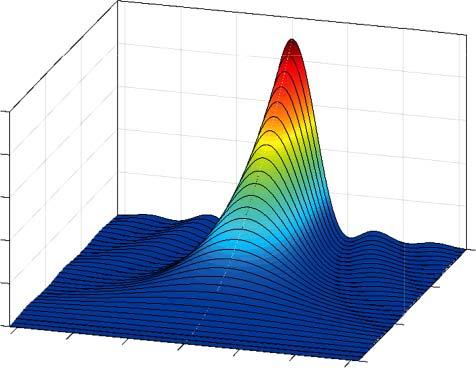
Figure1.3 Behaviorofthefunction F (��, t ) (Eq.(1.28))thatdeterminesthetimeevolutionof thetransitionwhenthefieldandthesystemareinresonance.Ifthelightfrequency �� equals thetransitionfrequency ��ba ofthestates |Ψa ⟩ and |Ψb ⟩,thefunctionpeaksincreasinglyand transformsintothe �� -functioninthelong-timelimit.
derivecorrespondingtransitionratesandcrosssections.Duringabsorption,the occupationprobability cb (t ) ofthestate |Ψb ⟩ increaseswithtime,whichcanbe expressedthroughintegrationofthefirstterminEq.(1.26)
andthefrequencyoffset �� = �� ��ba .AsillustratedinFigure1.3,thetransition probabilityincreasessharplywithtimeaccordingtofunction(1.28)whenthe externalfieldandthesystemarein resonance,hence �� = ��ba .
Equations(1.27)and(1.28)describetheevolutionoftheoccupationprobabilityof state |Ψb ⟩ withtimeandthuscharacterizetheratewithwhichtransitionsappears. Duringexcitation,thestates |Ψa ⟩ and |Ψb ⟩ formacoherentsuperpositionandthe associateddipoleoscillateswiththetransitionfrequency.
Fortimescaleslongerthanacycle (t ≫ 2�� ∕|��ba |),Eq.(1.28)changestoadelta function F (t ,̃��) ⇒ �� t �� (�� ��ba ) (note: �� ( ̃ ��) → ∞ for ̃ �� → 0).Furthermore,we expresstheamplitude à ofthevectorpotentialbythelightintensity I (compare Eq.(1.15)).
andfindthefrequency-dependentabsorptionrate
Sofar,weassumedperfectlymonochromaticlightcorrespondingtoaninfinite planewave.However,theintensityofrealisticlighthascomponentscoveringat leastanarrowbandoverafrequencyrange I (��)= dI ∕d ��;thus,thetotalabsorptionratehastobeintegratedovertheentirespectrum
Inthelong-timelimit,onlythevalueat ��ba contributesto Wba bynatureofthe deltafunction
Toexpresstheassociatedcrosssection,weuseEq.(1.17)
whichyieldstheabsorptioncrosssectionforthespectralintensityassociated withtheconsideredtransition.Notethattheunitofthecrosssectionistherefore areatimesfrequency.
Ofnote,theintegration(1.31)assumesasumofincoherentspectralcomponents. Thetreatmentofabsorptionfromcoherentandultrashortlaserpulseshastoconsidertheexplicitpulsewaveform.
Moleculestypicallyhavenumerousstatesinasmallenergyintervalthatcontributestotheabsorption.Hence,thetransitionprobabilityintothisbandisthe sumofalltransitionprobabilitiesmatchingthefrequencyoftheincidentlight. Thenumberofstatesinanenergyrangebetween Eb and Eb + dE canbeexpressed as ��(Eb )dE ,where ��(Eb ) iscalledthedensityofstates.Assumingthatthematrix elementsfortransitionsintosuchabandofstatesarecomparable,Fermi’sgolden rulecanbederivedviaspectralintegrationofthetransitionrates(notshown).
Thus,tocalculatethetransitionrateintoaband,multiplythesquareofthematrix elementbythedensityofstatesoftheinvolvedbands.
1.3.4DipoleApproximation
Sofar,thematrixelementsaredependentonthewavelengthanddirectionofthe lightwave(photon)viathe eikr term.Forinteractionswithvisible,(V)UV,andIR (butnotX-ray)radiation,thewavelengthismuchlargerthantheatomiclength scale;hence,thesystem“feels”anoscillatingdipolefield.Asaconsequence,the wavevectordependenceofthevectorpotentialcanbeneglected,accordingto
1FundamentalsandMechanismsofVacuumPhotoionization
eikr ≈ 1for �� → ∞; k → 0.Inthisso-called dipoleapproximation,thevector potential A(r, t ) → A(t ) describingthelightfieldbecomesspatiallyhomogenous and,asaconsequence,themagneticfield B = �� × A vanishes.Descriptively,the electronvelocity ve islowenoughtoneglectboththemagneticLorentzforce e(ve × B) andtherelativisticeffectsthatariseiftheelectronisdrivenatveryhigh intensities(> 1016 W∕cm2 ),predominantlyforlongwavelengths.Thematrix elements M D ba cannowexpressedbythedipolematrixelementintheso-called lengthformviathetransitiondipolemoment Dba =−erba containingspatial coordinates ( ̂ x, ̂ y, ̂ z) ofthepositionoperator r
Thus,thematrixelementoftheinteractionHamiltonian,representingthe expectationvalueofitsenergyspectrum,isnowrelatedtothemuchmore descriptivedipolematrixelement Dba ,whichrepresentsthechargedistribution withinthewavefunction.
Thedipolematrixelement Dba (andalso Mba )determinestheinteractionstrength betweenlightandtheatomormolecule.Itsscalarpartdescribesthechangeof chargedistributionduringtransitionfrom |Ψa ⟩ to |Ψb ⟩ thatdeterminesthetransitionprobability.Thevectorpartdemandsprojectionofthelightfieldontothe dipolemoment,i.e.itdefinestherequiredlightpolarization.
Thecorrespondingabsorptionratecanbederivedto
Ifthedipolematrixelementiszero,thetransitionisso-called dipole-forbidden. However,suchtransitionsareoftenobservedbecausetheymaybeallowedas (weaker)magneticdipoleorelectricquadrupoletransitions.Commonlyusedin spectroscopytodescribetheabsorptionstrengthisthedimensionless oscillator strengthfij ofatransitionbetweenstates i and j
Oscillatorstrengthvaluesarebetween0and1.Typicalvaluesareshownin Table1.2.
Aninterestingapplicationoftransitionratesisrelatedtothefamous Einstein coefficients.Therefore,theBoltzmanndistributionisappliedtothelevelpopulationofanensembleofatomsinequilibriumandthePlanckdistributiontothe photonfield.AninterestingfindinginthecontextofVUVsourcesisthatspontaneousemissionincreasesrelativetostimulatedemissionasthecubeoflight frequency.Hence,populationinversion,whichisabasisoflasersources,isdifficult togenerateandmaintaininhighlyexcitedsystems.Insteadofcooperatingina stimulatedemissionprocess,theexcitedpopulationsrandomlylooseenergyvia spontaneousemission.
1.3.5SelectionRules
Tocalculateabsorptionrates,thecorrespondingmatrixelementshaveto beevaluatedbyspatialintegrationoverthecorrespondingwavefunctions ⟨Ψb |r|Ψa ⟩ = ∫ Ψb r Ψa d r inEq.(1.36).Iftheintegralvanishes,atransition doesnotoccur(withtheexceptionofhigherordertransitions),whichiscalled dipole-forbidden.Inparticular,thisisthecaseifthefunction Ψb r Ψa isantisymmetric,andthus,itsintegraloverspaceyieldszero.Thiscanoftenbedetermined byanalysisofthewavefunctionsymmetrywithoutexplicitcalculationofthe integral.Forexample,dipoletransitions(e.g. |s⟩ → |s⟩)arenotallowedforthe hydrogenatom.Thesymmetrybehaviorisreflectedbytheparityselectionrule (ref.thirdcolumninTable1.1).Usingquantumnumberstotermthestates, furtherselectionrulesfordipoletransitionscanbederivedbyevaluationof zeroandnonzeromatrixelements,as Δl =±1and Δm = 0, ±1,where l isthe angularmomentumquantumnumberand m isthemagneticquantumnumber inaone-electronsystem.Descriptively,theserulesreflectconservationof angularmomentumbecausethespinoftheabsorbedphotoncontributestothe system’sangularmomentum L.The z-componentof L isassociatedwiththe electrons’magneticmoment,whichcouplestothephotonspin,thusyielding Δm = 0inthecaseoflinearpolarizationand Δm =±1forcircularlypolarized light.Formultielectronsystems,thetotalangularandorbitalmomentumas wellasthetotalspinisevaluated,andcouplingschemesofangularmomentumsourcesareconsidered.Inrealisticsystems,especiallymolecules,several dipole-forbiddentransitionscanneverthelessbeobserved.Forexample,the dipole-forbiddentransitionsmaybeallowedasmultipoletransitions.Typically, theratedropsdownbythreeordersofmagnitudefromonemultipoletothenext, seeTable1.2.
1.3.6ElectronicLineWidthandLifetime
Sofar,weassumedthatthestateshavesharpeigenenergiesandcanbedescribed viatime-dependentwavefunctionsoftheform �� e iEt ∕ℏ (ref.Figure1.4a,d). Supposeastatethatisexponentiallydecayinginamplitudeasthesystem changestoanotherstate(Figure1.4b).Thedecayingfunctioncorresponds
Table1.1 DipoleselectionrulesforelectronictransitionsinaHydrogen-likeatom. J = L + S is thetotalangularmomentum, L isthetotalorbitalmomentumquantumnumber, S isthetotal spinquantumnumber, MJ isthetotalmagneticquantumnumber,and �� istheparity.
RigorousLScoupling
a)Rigorousforone-electronsystems.
b)SmallatomswithlowLS-coupling.
c)Heavieratomswithtransitionsbetweenseveralmultipletstates.
Intermediate coupling
iEt/ħ]
re[e–iEt/ħ–t/2τ]
Figure1.4 Schematicwavefunctions(top)andtheirspectra(bottom).(a,d)Stationarystate. (b,e)DecayingstateandresultingLorentzianlineprofile.(c,f)Collision-inducedphase distortionanditsresultingspectrum(fastFouriertransformed).
toasuperpositionofoscillationswhosefrequenciescanbeFourieranalyzed accordingto
where �� isthetimeconstantofthedecay.Therefore,thedecayingdipoleoscillationisassociatedwithafiniteenergyrange.Thewidthathalfheightofthe Lorentzianfunction g (E ′ ) is ℏ∕�� andcalled naturallinewidth (Figure1.4e).Consideringthatthestatetowhichthetransitionappearsmayalsohaveafinitelifetime ��b ,thelinewidthisgivenby
Hence,theshorterthestatelifetime,thelesspreciseitsenergyandvice versa.ThisconceptisparticularlyimportantforREMPI(seeChapter2),where ionizationratesdependontheenergymatchbetweenthephotonandpossible intermediatestatesaswellasthephotondensity.Itfurthergivesrisetothe conceptofvirtualstatesofuncertainenergy,whichmaybeemployedathigh photondensities.
Measuredlinewidthsaretypicallymuchlarger,whichcanbeattributedto theotheroriginsofbroadening.First,collisionswithotheratomsmaylead to(radiativeornonradiative)transitionsandrandomizethephaseofemitted radiation(ref.Fig.1.4c,f).Bothreducestheeffectivelifetimeofthestateand leadstothe(pressure-dependent) collisionbroadening oftheLorentzianline profile.Secondary,therelativemotionofatomsresultsinfrequencyshift.Thus, theso-called Dopplerbroadening increaseswithtemperatureanddecreases
1.3Photoabsorption 13 withatomicmassandproducesaGaussianprofile,whichconvolveswiththe Lorentzianprofile.
1.3.7ElectronicTransitionsofMolecules
Sofar,wetreatedlightabsorptionusingasimplemodelsystemundergoing electronictransitions.However,realelectronicspectraofmoleculesarehighly complex.Thiscannotbecomprehendedbysingle-electrontransitionsinastatic potentialmodelasthenucleicmotioniscompletelyneglected.Indeed,anyelectronictransitionchangesarealsystem’schargedistributioninducingvibration ofthenuclei,which,inturn,changestherotationalstate.Moreover,fullunderstandingofthemoleculeresponseimpliesconsiderationofallpossiblesources ofangularmomentumandtheircouplingscheme.Notethatforphotoionization, REMPIcrosssectionsareaconsequenceoftheactualelectronicstructure.In directSPI,theoutgoingstatesarecontinuumstates,beinglessrestricted.
Correspondingtoatoms,selectionrulesarisefromtheconservationof totalangularmomentumandthetotalparitychangesindipoletransitions, referTable1.2.Initialestimatesoncrosssectionscanbederivedfromtypical oscillatorstrengthvaluesandrespectivetransitionprobabilities,assummarized inTable1.2andindicatedbyexemplaryabsorptionspectrumofbenzene (Figure1.5).
Severalschemesallowfor(atleastqualitative)indicationsonthemolecules’ electronicspectraandtransitionprobabilities.Hund’srulesdescribehowthefour sourcesofangularmomentum(electronorbitalangularmomenta L,rotationof nuclearframework O,andspinofelectrons S andnucleus I),arecoupled(ina diatomicmolecule).Anyelectronictransitionchangesthechargedistribution. Thenucleireadjusttotheseforcescausingvibration.Consequently,electronic transitionsinmoleculesareaccompaniedwithvibrationaltransitions,givingrise totheterm vibronic transitionsthathavemanylinesintheabsorptionspectra. Ofnote,nuclearrearrangementismuchslowerthanelectronictransitions,see alsoFigure1.1.ThisisthebasisfortheFranck–Condonprinciplethatmakes statementsonthemostprobablevibronic(electronic + inducedvibrational)transitions,seeFigure1.6.Electronicexcitationisvirtuallyinstantaneousbeforethe nucleicanreadjusttothedistance rB andmustthereforebedrawnasa“vertical” transition(bluearrow).Fromthenumerousvibrationalstatesoftheupperelectroniclevel,theonewiththegreatestoverlapwiththeoriginalstatevibrational wavefunctionisoccupied.
Table1.2 Typicaloscillatorstrengthsfortransitionsaccordingtotheselectionrules
Symmetry-/ electric dipole-forbidden singlet
dissociation
Rydbergseries
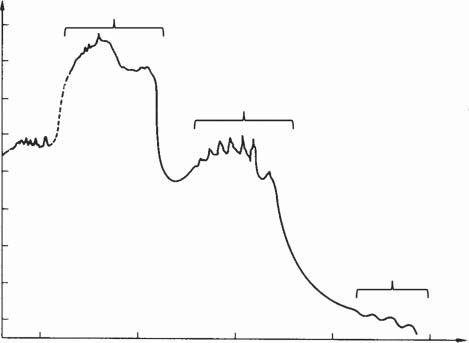
Figure1.5 Absorptionspectrumofbenzene,illustratingthedipoletransitionprobabilities accordingtoselectionrules.Source:ModifiedfromBarrow(1962).
Figure1.6 Electronictransitionsare fasterthannuclearmotion.The nucleirearrangeafterelectronic excitation(verticalbluearrow)to thenewdistance rB .Transition probabilityishighestbetweenthe vibrationstatesofthegreatest waveformoverlap,determiningthe possiblefinalstates(Franck-Condon principle).Forexampleson Franck-Condoncontrolledvibronic spectrum,seetheanalysisofthe biphenyleneREMPIspectrumand othermoleculesinchapter2.
Vibronictransitionsinturninducerotationaltransitionscontributingmany moreabsorptionlines,accordingtotheselectionrules.Comparabletoiceskaters, whoextendtheirarmsduringapirouettetoslowdowntheirspin,thevibration affectsmolecularrotation.
Complexityfurtherincreasesforpolyatomicmolecules.Forsmallmolecules, applicationoftheselectionrulesmustconsidertheirwholesymmetry,
1.3Photoabsorption 15 astheelectronicexcitationaffectsthecompletestructure.Detailedelectronic structuresarecalculatedwithmethodsofcomputationalchemistrythatarebased onseveralapproximations,e.g.Hartree-Fock(abinitio),Post-Hartree-Fock (considerselectroncorrelations),ordensityfunctionaltheory.Inmanyapplications,aparticulargroupofatomsinthemoleculeisconsideredbecausethey showacharacteristicabsorptionfeature.Thesesubgroups,called chromophores, mayoccurindifferentmoleculescontributingabsorptionbandsofthesame wavelength.Basicconsiderationsonamolecule’sabsorptionbehaviorcanoften bereducedtothepresenceofsuchchromophoresandperturbationsfromother groupsinthemolecule.Aprominentexampleisthe B-bandofbenzeneand derivativesoriginatingfrom �� → �� ∗ transitions.Althoughthis benzenoid band isforbiddenbysymmetryforpureelectronicstates,itisallowedwithrespectto theoverallsymmetryofvibronicstates.Incontextofanalyticalapplications,it contributestheintermediateREMPIstatesgivingthearomaticringstructures highREMPIcrosssectionsfore.g.,thefourthharmonicoftheNd:YAGlaser (266nm).Comprehensivecollectionsofphotoabsorptionspectralinformation canbefoundintheliterature,e.g.Berkowitz(2002).Havingregardtothe scopeonphotoionizationforanalyticalmassspectrometry,manystructuraland spectroscopicdetailscanbeomittedhere,andinthefollowing,wecanfocus onspecificaspectsthathavepracticalimplicationstomassspectrometry.In chapter2theapplicationofREMPIinmolecularspectroscopyusingtunable lasersisdiscussedwiththehelpofphotoabsorptionandionizationspectraof suitedinterestingmolecularsystems.
1.3.8Single-photonIonization(SPI)
Sofar,electronictransitionsbetweenboundstatesweretreated.Theirprobabilitiesatgivenphotonenergiesandradiationintensitiesareformallydetermined by(dipole-)transitionmatrixelementsormorepracticallybyabsorptioncross sections(ref.Eqs.(1.33,1.34))(Berkowitz2002).Correspondingabsorptionspectraareoftencharacterizedusingoscillatorstrengthvalues(Eq.(1.38)).Ifanelectronisreleasedbytheabsorptionprocess,thefinalstatehasafreeelectron, allowingcontinuousvaluesforitsenergy Ekin andmomentum pe (continuum state).Consequently,SPIislessconstrainedtostructuralandelectronicproperties,anditscrosssectionsshowarathernarrowdistribution,enablingtouseSPI forauniversalionizationofmolecules(thresholdselectivity Eh�� ≥ IE ),seealso Chapter3forSPI-MSapplications.SPIandpossiblesubsequentfragmentation ofamolecule AB inthegroundvibronicstatecanbeformallywrittenas
withthequotationmarkindicatingtheexcitedstate.Again,thetimescaleofthe electronejectionprocess(Eq.(1.41))ismuchshortercomparedtotherelaxation describedbyEq.(1.42).Consequently,theelectronenergy Ekin canbemeasured toprobetheenergy EB oftheexcitedstateofthemolecularion [AB+ ]′ viaphotoelectronspectroscopy(PES)accordingto Ekin = h�� EB .Detailedionization andfragmentationstudiesarefacilitatedbycombiningMSwithPES,ideallyin
